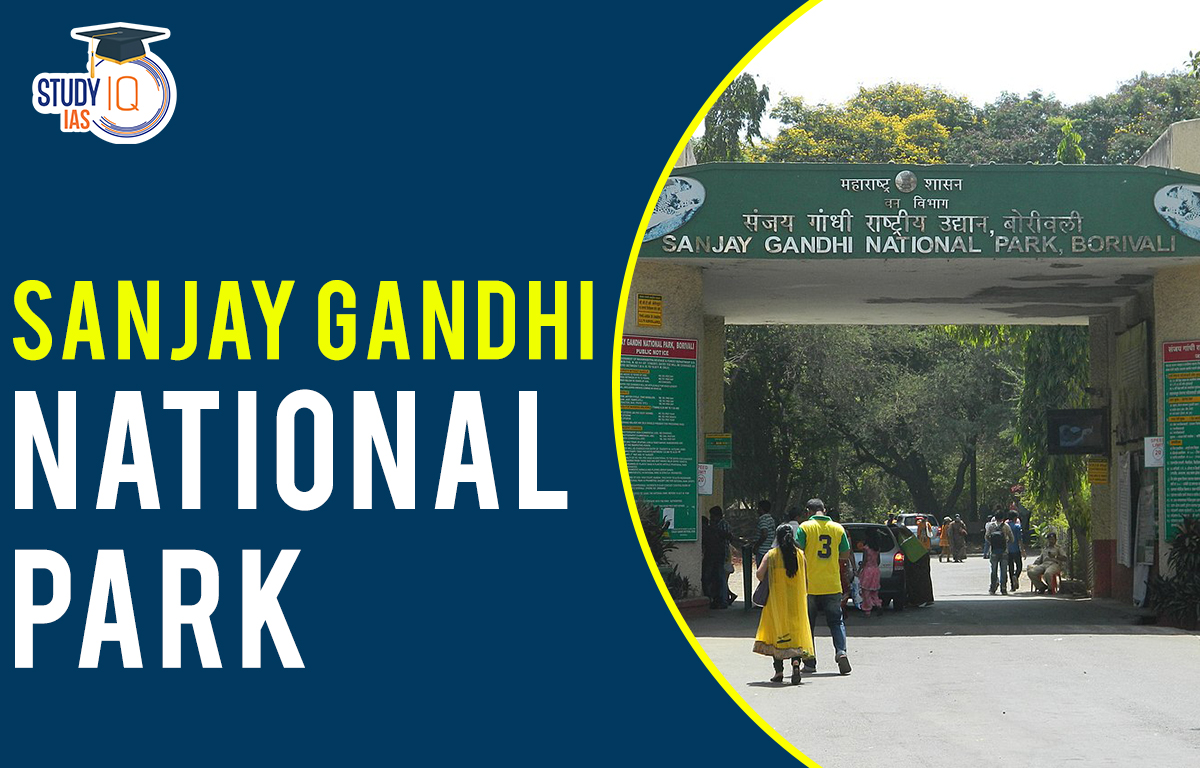Table of Contents
Sanjay Gandhi National Park (SGNP) is a hidden gem in the heart of Mumbai, Maharashtra India. This 87-square-kilometer protected area is home to a diverse range of flora and fauna, including leopards, monkeys, snakes, and birds. One of the most unique features of SGNP is its location within a major city. It is one of the largest national parks in Asia to be located within city limits, making it an accessible oasis for nature lovers.
Another unique aspect of Sanjay Gandhi National Park is its rich history. The park is home to the 2400-year-old Kanheri caves, which are a popular tourist destination. The caves were carved out of the rocky basaltic cliffs by Buddhist monks, and they contain some of the finest examples of Buddhist rock art in India. It is a popular spot for hiking, birdwatching, and wildlife safaris. Visitors can also take a boat ride on the Powai Lake or visit the Tribal Museum to learn about the indigenous people of the region.
Sanjay Gandhi National Park History
Sanjay Gandhi National Park, formerly known as Borivali National Park, is a protected region in Maharashtra, India, near Mumbai. It is one of the most popular national parks in the world and is notable for being one of the few major national parks located within a city’s limits.
SGNP is home to a diverse range of flora and fauna, including leopards, monkeys, snakes, and birds. It is also home to the 2400-year-old Kanheri caves, which were sculpted by Buddhist monks between the 9th and 1st centuries BCE.
In 1996, the park was renamed after Sanjay Gandhi, the eldest son of former Prime Minister Indira Gandhi. In the same year, some forests from the Thane division were merged into the park, expanding its total area to 103.84 square kilometers.
Sanjay Gandhi National Park Geography
Sanjay Gandhi National Park is a unique urban oasis located in the northern suburbs of Mumbai, India. It is the only national park in the world to be located entirely within the boundaries of a major city. Sanjay Gandhi National Park is home to a diverse range of flora and fauna, including leopards, monkeys, snakes, and birds. It is also home to two lakes, Vihar Lake and Tulsi Lake, which provide water for millions of people in Mumbai.
Sanjay Gandhi National Park is a popular spot for hiking, birdwatching, and wildlife safaris. Visitors can also explore the 2400-year-old Kanheri caves, which are a popular tourist destination. SGNP is also a vital source of clean air for Mumbai. Its dense forests help to filter out pollutants, making it an essential part of the city’s ecosystem.
Sanjay Gandhi National Park Unique features :
- Located entirely within the boundaries of a major city
- Home to a diverse range of flora and fauna
- Two lakes that provide water for millions of people
- 2400-year-old Kanheri caves
- A vital source of clean air for Mumbai
Sanjay Gandhi National Park Biodiversity
Sanjay Gandhi National Park is a unique urban oasis that is home to a variety of rare and endangered flora and fauna, including the Karvi flower and leopards.
The Karvi flower is a native wild orchid that blooms once every eight years and is only found in the park and surrounding regions. Leopards are also a common sight in the park, making it one of the few places in the world where visitors can see these big cats in their natural habitat.
In addition to its unique flora and fauna, Sanjay Gandhi National Park is also a popular spot for hiking, birdwatching, and wildlife safaris. Visitors can also explore the 2400-year-old Kanheri caves, which are a popular tourist destination.
Check out:- UPSC Syllabus
Sanjay Gandhi National Park Wildlife
Sanjay Gandhi National Park in Mumbai, India, is a unique urban oasis that is home to a remarkable diversity of flora and fauna. The park is home to over 1,000 plant species, 251 bird species, 5,000 insect species, 40 mammal species, 38 reptile species, 9 amphibian species, and 150 butterfly species.
Sanjay Gandhi National Park is also home to a number of endangered species, including the Indian leopard, the leopard cat, the four-horned antelope, and the Indian flying fox. The park’s diverse ecosystem provides a vital habitat for these and other species, making it an important biodiversity hotspot in the heart of Mumbai.
Check Out:- UPSC Prelims Syllabus
Sanjay Gandhi National Park and Kanheri Caves
It is situated in Maharashtra, and its previous name was Borivali National Park. The rocky cliff that is located within the park is where the 2400-year-old Kanheri caverns were carved out. The Sanjay Gandhi National Park’s forests, on the former island of Salsette, on the western outskirts of Mumbai, are home to the Kanheri caverns, a collection of caverns and rock-cut monuments.
One of the biggest singular excavations in the nation, the Kanheri caves are made up of more than 110 distinct rock-cut monolithic excavations. The majority of these excavations were carried out during the Hinayana period of Buddhism, but they also contain a number of examples of Mahayana-style architecture and a small number of printings of the Vajrayana order.
Check Out :- UPSC Mains Syllabus
Sanjay Gandhi National Park Flora and Fauna
Sanjay Gandhi National Park makes up about 20.5% of Mumbai’s geographic territory and is a part of the Western Ghats biodiversity. Kadamba, Teak, Karanj, Shisham, and various species of acacia, Ziziphus, and euphorbias are among the plants discovered in Sanjay Gandhi National Park. Chital, Rhesus macaque, Bonnet macaque, Black-naped, Bengal Tiger, etc. are examples of fauna.
Check out:- UPSC Exam Pattern
Sanjay Gandhi National Park Tourism
Sanjay Gandhi National Park is a unique urban oasis in Mumbai, India, and one of the most visited national parks in Asia. It is home to a diverse range of flora and fauna, including leopards, monkeys, snakes, and birds, as well as the 2,400-year-old Kanheri Caves.
Visitors can enjoy a variety of activities in the park, including:
- Wildlife safaris: See lions, tigers, and other animals in their natural habitat.
- Nature trails and treks: Explore the park’s diverse flora and fauna on foot.
- Boating: Enjoy a leisurely boat ride on the misty lake.
- Rock climbing: Scale the numerous rock faces in the park and at the Kanheri Caves.
- Visit the Kanheri Caves: Learn about the park’s rich history and culture at the 2,400-year-old Kanheri Caves.
Sanjay Gandhi National Park Trimurti Temple
Sanjay Gandhi National Park in Mumbai, India, is home to a unique Jain temple called Trimurti Digambar Jain Mandir. This temple is widely visited by the Digambar sect of the Jain community and is known for its three huge idols of Lord Adinath and his two sons, Lord Bahubali and Lord Bharata. The statue of Rishabhanatha is 31 feet tall and is the tallest of the three. On either side are the statues of Bharata and Bahubali, each being 28 feet tall. The temple also has a 51-foot kirti stambh, or pillar of glory.
Sanjay Gandhi National Park UPSC
In Mumbai, Maharashtra, there is an 87 km2 protected region called Sanjay Gandhi National Park, or SGNP. It was founded in 1969, and Borivali is where its corporate offices are. Within the park are the 2,400-year-old Kanheri caverns, which were carved by monks out of the rocky basaltic cliffs. Students can read all the details related to UPSC by visiting the official website of StudyIQ UPSC Online Coaching.
| Other Related Links | |
| UPSC Exam 2024 | UPSC Age Limit |
| UPSC Prelims | UPSC Mains |
| Tiger Reserves in India | Radioactive pollution |


 World Oceans Day 2025, History, Theme, S...
World Oceans Day 2025, History, Theme, S...
 World Environment Day 2025, Theme, Histo...
World Environment Day 2025, Theme, Histo...
 Unemployment Rate in India, Current Rate...
Unemployment Rate in India, Current Rate...





















